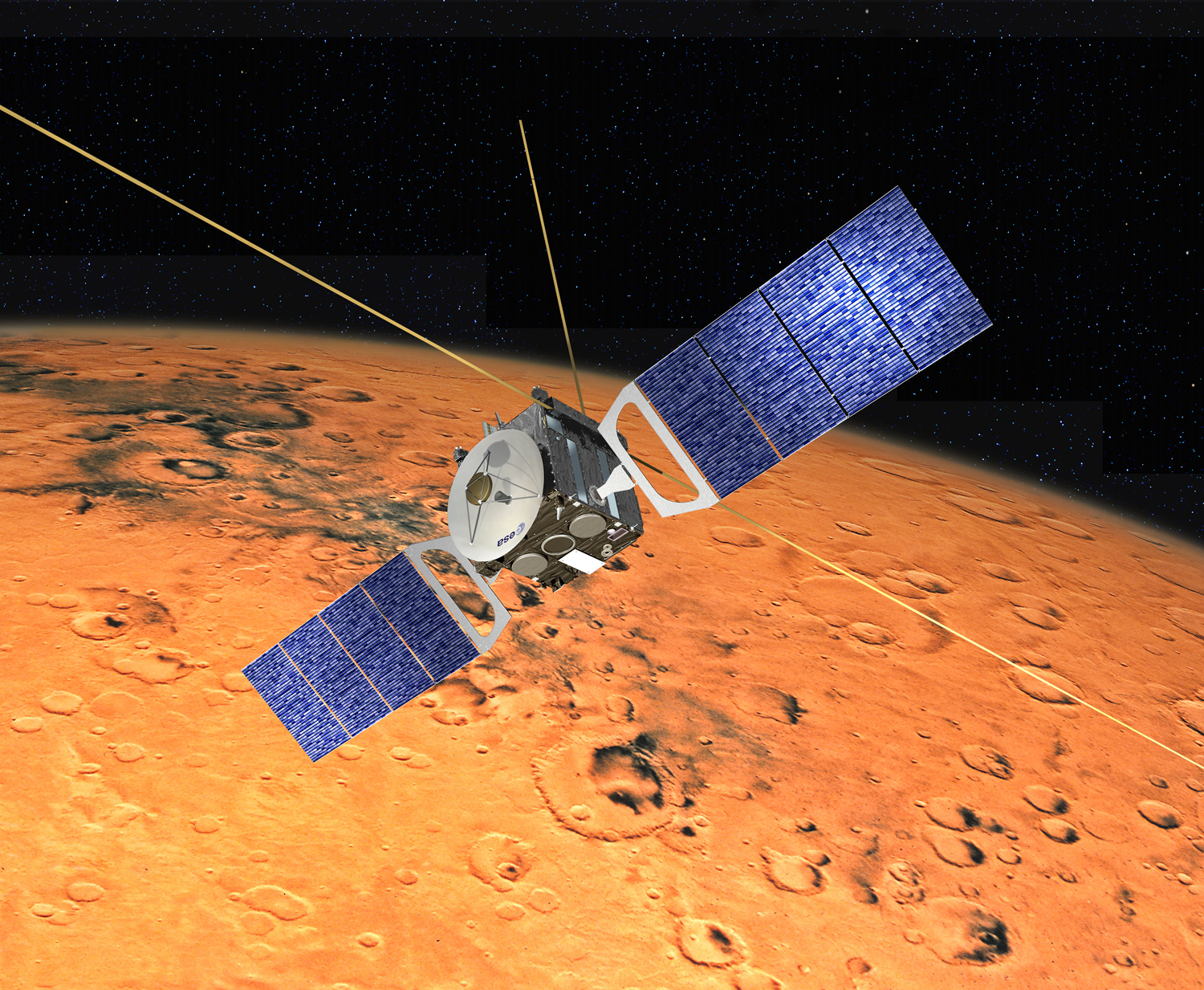10 marvellous years for Mars Express
03 June 2013
A decade has passed since Europe’s first Martian explorer began its journey to the Red Planet. In the past 10 years, Mars Express has thrown new light on many of the mysteries of Mars, and helped to prepare the way for ESA’s next mission to Mars, the ExoMars Trace Gas Orbiter.
Even before its launch on 2 June 2003, Mars Express was a pioneer. It was built and launched in record time and at a much lower cost than previous deep space missions. Since beginning science operations, the high resolution camera has provided thousands of breathtaking, 3D views of the Martian surface. These have included dramatic images of huge volcanoes, gigantic canyons, dry river valleys and polar ice caps.
Another instrument has detected rock minerals that form only in the presence of water. Clearly, Mars was once much warmer and wetter, with conditions that may once have been suitable for life. Radar and other instruments have detected water ice that is not only in the polar ice sheets but also in vast, frozen ground deposits and deep beneath the surface.
Even the massive volcanoes have provided surprises, with evidence to suggest that they have been active within the last few million years. They also seem to have been partially buried by flowing glaciers in the not-so-distant past. During its studies of the Martian atmosphere, Mars Express has detected possible signs of methane. On Earth, this gas is produced by active volcanism and living organisms. Is there primitive life on Mars even today?
Mars Express has also studied the tiny moon Phobos in unprecedented detail.
As part of the international effort to explore Mars, it has acted as a communications link between Earth and spacecraft on the surface. The adventure has not yet ended and it is hoped that the orbiter will continue its marvellous mission for many years to come.








